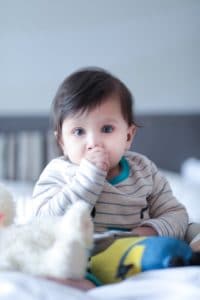Do Hearing Aid Batteries Expire?
Have you ever opened that kitchen drawer and found a little hoard of stuff you forgot you had? Maybe some stray rubber bands, a...
Posted on January 20, 2017
Hearing LossDid you know that at birth, infants are able to hear more than 300,000 sounds?
Unfortunately, because of the noise-filled environment we live in, our hearing ability only decreases as we mature. Hearing loss is the third most common physical condition, according to hearingloss.org. But unlike the other top ranking conditions including arthritis and heart disease, hearing loss can affect those of all ages.
In the United States, about two or three infants out of every 1,000 have some level of hearing loss in one or both ears. Hearing loss that is present at birth is referred to as congenital hearing loss while hearing loss that develops over time is called gradual hearing loss – and is the more common of the two forms.

Gradual hearing loss can be caused by the following:
Many of these triggers are more prevalent in children – especially ear infections.
As reported by the New York Times, the rate of ear infection diagnoses is on the rise.
Approximately two-thirds of children will suffer from an ear infection by the age of three and one-third of those children will have at least three ear infections after the initial attack.
Certain factors can put children at higher risk of developing ear infections, including those who attend day-care, infants that were bottle-fed, exposure to second-hand smoke, obesity and medical disorders such as Down syndrome.
For more detailed information about middle ear infections and their symptoms, watch our educational video here.
Other than the obvious inconvenience of struggling to hear in day-to-day life, hearing loss can affect many other aspects of your child’s routine.
For example, young children with undiagnosed hearing loss can experience impaired language and speech development.
Older children can also suffer developmentally. Research shows that students with hearing loss perform poorer in school than children without hearing loss. In some cases, hearing loss can even be mistaken for a learning disability.
Luckily, the proper diagnosis and tools, such as hearing aids, can help to solve or treat the negative effects of hearing loss.
If your child’s hearing appears normal, it’s still important to be aware of environmental factors that cause hearing loss.
Loud music is one of the most common causes of adolescent hearing loss. Monitor your child’s volume levels when listening to television, music and when using earphones.
If you’re going to an event such as a concert or sporting event, that may expose your child to abnormal noise levels, invest in a set of children’s ear plugs to safeguard their ears on the go.
Are you unsure about your child’s hearing ability? It’s never too early to check.
Request an appointment today to schedule a diagnostic exam.
If you’re interested in more information about hearing loss and hearing aid options for adults, take our online hearing quiz.
Have you ever opened that kitchen drawer and found a little hoard of stuff you forgot you had? Maybe some stray rubber bands, a...
Tympanosclerosis is a post-inflammatory condition affecting the tympanic membrane, or eardrum, and middle ear. Tympanosclerosis can result in hearing loss or be asymptomatic and...
Otomycosis is a fungal ear infection affecting the outer ear. Fungal ear infections are less common than bacterial infections, making up 10% of all outer...
Ear pressure is the feeling that your ears are full, stuffy or plugged. Often compared to the sensation of having water in your ears,...